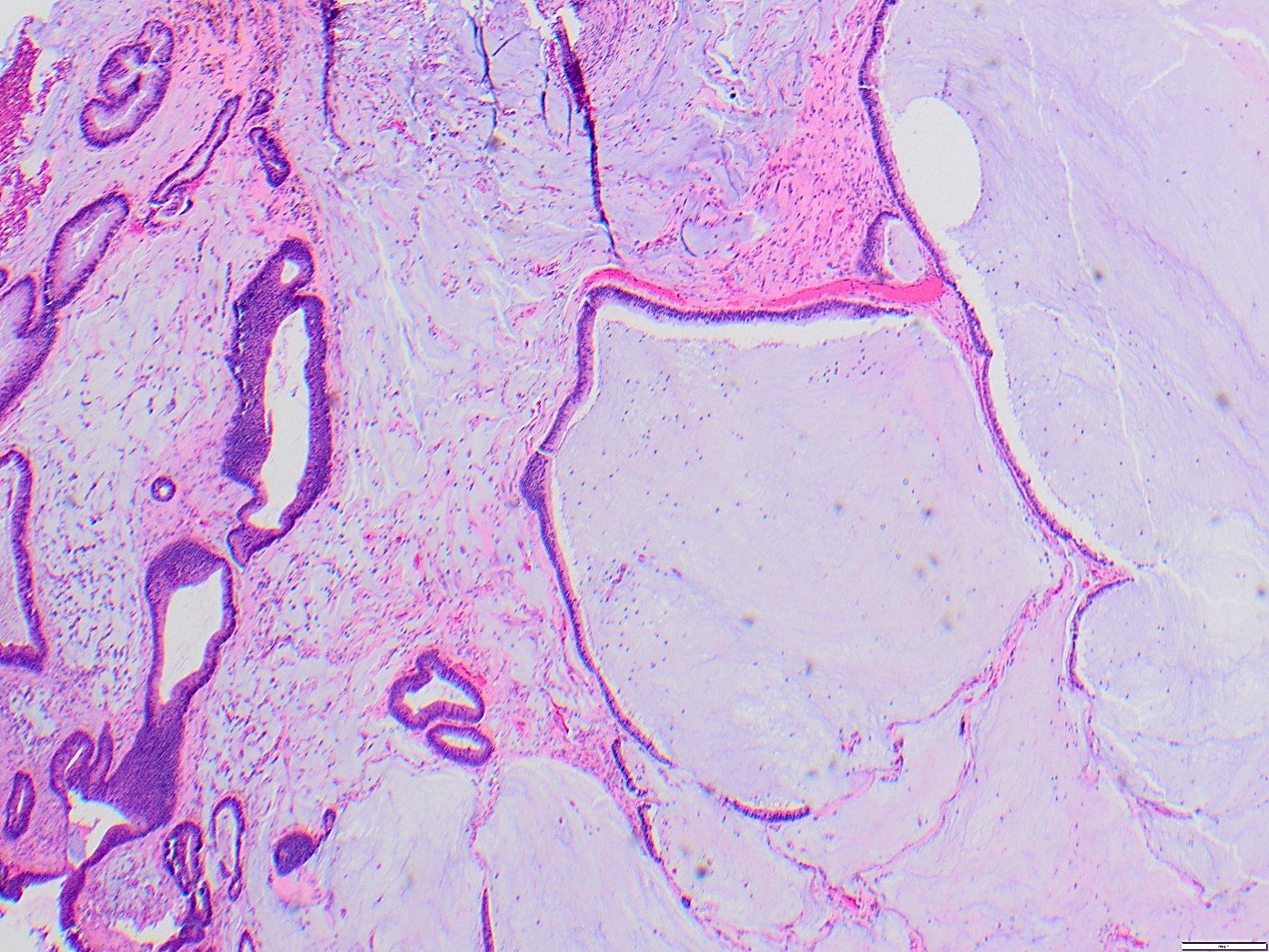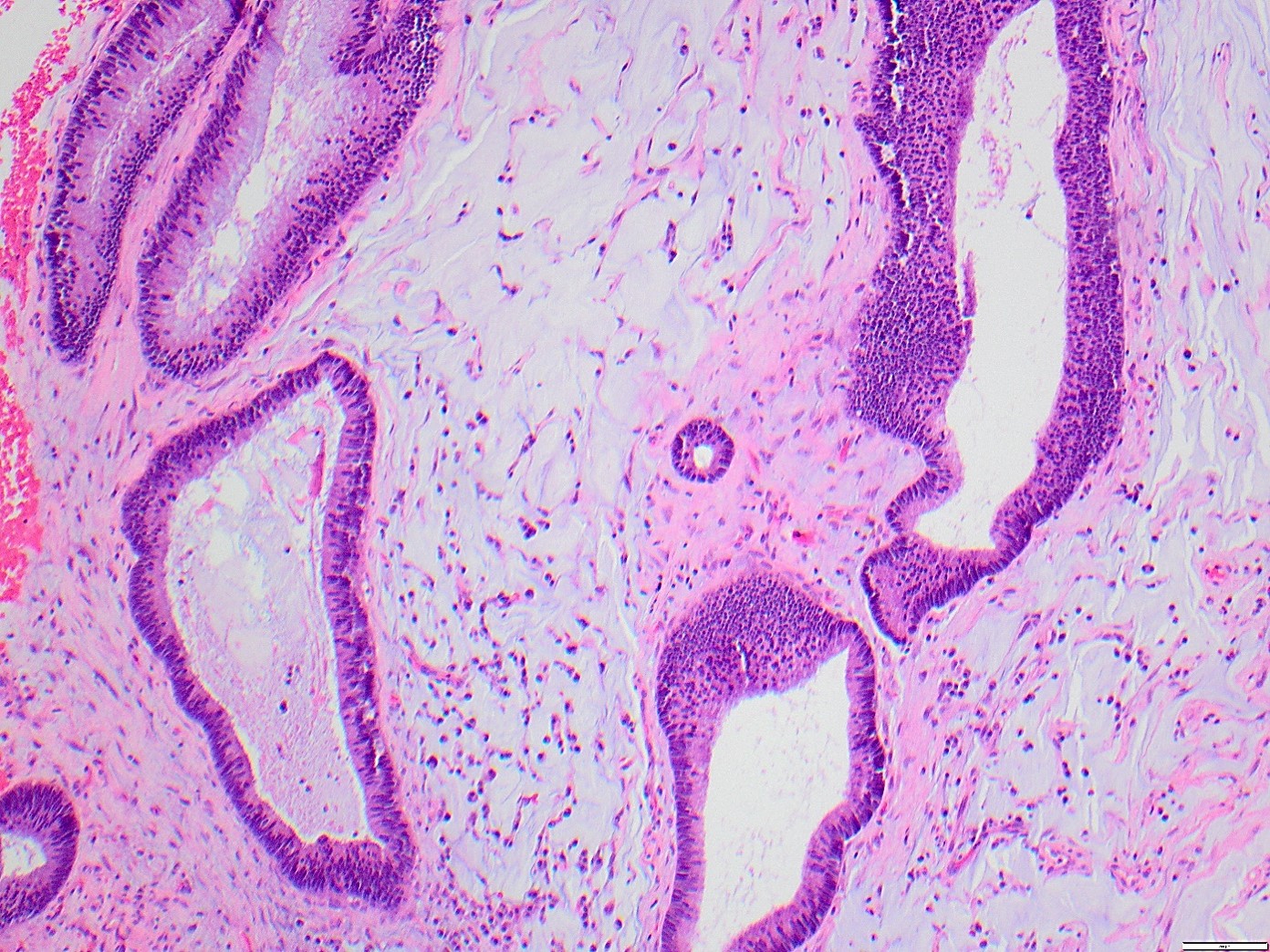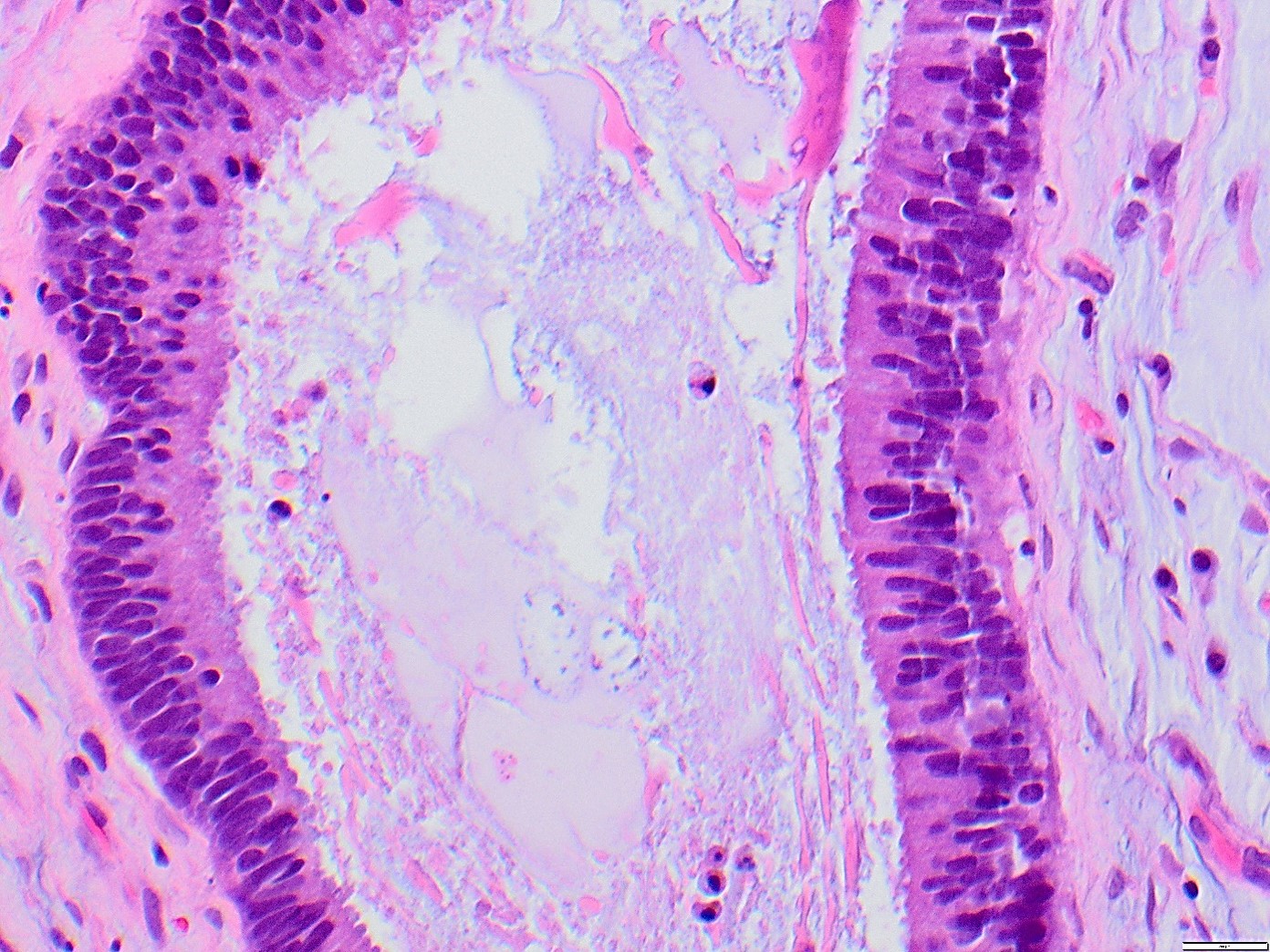Case History
A 61 year-old man with no other significant medical history presents with a nasal region mass. The biopsy is shown. Which of the following is a documented risk factor for the lesion?
- Asbestos exposure
- Wood dust exposure
- Smoking
- HPV infection



Answer: B. Wood dust exposure
Brief explanation of the answer:
Sections show intestinal type glands with nuclear atypia and crowding in pools of mucin. As a primary sinonasal tract tumor, these features are most consistent with sinonasal intestinal type adenocarcinoma, mucinous type. These aggressive tumors are usually not diagnosed early. Affected patients tend to be middle-aged males. Wood dust exposure is associated with a 900-1000 times increased risk. In addition to woodworkers, workers in the leather and furniture industries are also at risk. In contrast, sinonasal non-intestinal, non-salivary adenocarcinoma has no known occupational risk factors.
Intestinal-type adenocarcinoma histologic subtypes include papillary, colonic, mucinous, solid and mixed types. They tend to be CDX-2 positive with variable CK7 and CK20 expression.